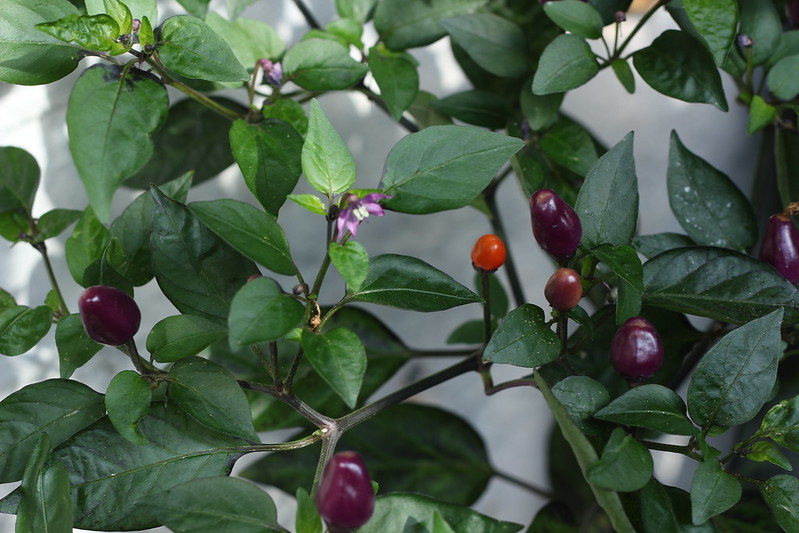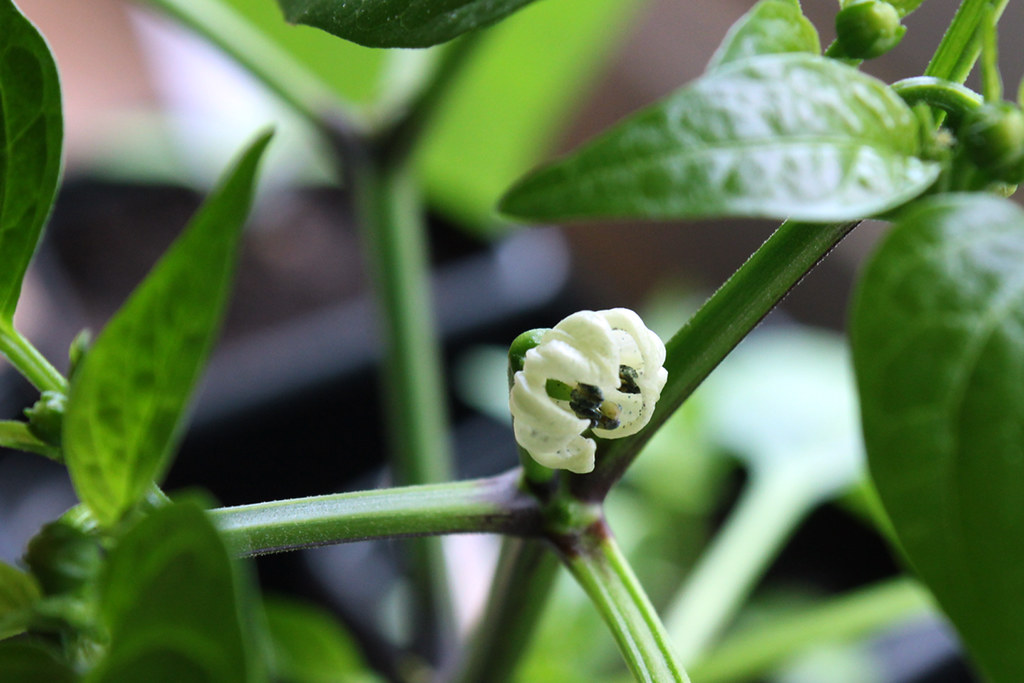As a result of this tendency to wiffle about, I tend to post about something and subsequently fail to return to the subject. I was reminded of this as I heaved one of my chilli plants back onto the bench from the floor - it's put there when my son wants to create a space to sit in my plant stuffed balcony.
When I look out onto my tiny balcony, I see how beautifully the chilli plants are growing. I last wrote about these chillies as tiny newly bought plants so it's time for an update.
 |
| ~ Chilli 'Tangerine Dream' ~ |
Viewed from above, Tangerine Dream is a handsome beast of a plant. I am (usually) pants at growing chillies so, flushed with success, I'm sharing this update to show that anyone can have a go and achieve a beautiful plant, whether the fruit gets eaten or simply admired.
I'll confess that I have no idea how best to use these particular chillies (suggestions invited!) but they are undeniably fun and frivolous as chillies go. I'm accustomed to the more generic red supermarket chillies for my cooking but was intrigued by the names and trying something a little unusual.
 |
| ~ Chilli 'Fairy Lights' ~ |
Tangerine Dream is a relatively mild vegetable chilli while Fairy Lights, being a spice chilli, is considerably hotter, although nowhere near the heat of superhot chillies. When will they be ready to pick? I have no idea! I'm not sure that I want that day to come as these plants are a joy to behold at the moment. Fairy Lights is currently gearing up to transform its fruit from purple through yellow into red - the colours during this change are sublime.
 |
| ~ Chilli 'Thai Green Curry' ~ |
The chilli that I grew myself from seed this year is Thai Green Curry (also from Sea Spring Seeds); It's another mild vegetable chilli but has long slim pods. I sowed the seeds just after I bought the other two plants so Thai Green is less developed than those. At the moment there's only one chilli pod but lots of flowers so I'm hoping for more. This is not such a pretty plant but may well be more useful. It will be good to have a choice for once - surely the whole point of growing your own!
Growing notes: (What worked for me)
Buy small or sow early indoors (mid-February)
Pot on into 10 litre pot when plant is about 3 inches tall. Be careful not to handle the stem.
Use good multi purpose compost; mix in added fertilizer, eg chicken manure pellets
Water when top 2 inches of soil in the pot feels dry.
Give a boost by watering in additional plant food, eg, liquid seaweed.
Grow in a mild sheltered environment - next to a sunny house wall is ideal.
Both of the purchased chillies have been very sturdy healthy plants that have grown steadily. I followed the advice given by Sea Spring Seeds at purchase and repotted the plants into their final 12 litre pots using good compost (Dalefoot peat free) with added chicken manure pellets. They've been fed when I remember (but not more frequently than weekly) using either Tomorite, liquid seaweed or even orchid food added to the watering can; all promote flowering and fruiting. I watered when the soil felt dry at a couple of inches depth. I didn't move them on from 12 litre pots because, with three chilli plants growing, that's all I have room for on the balcony. Even so, the plants are a good chunky size.


